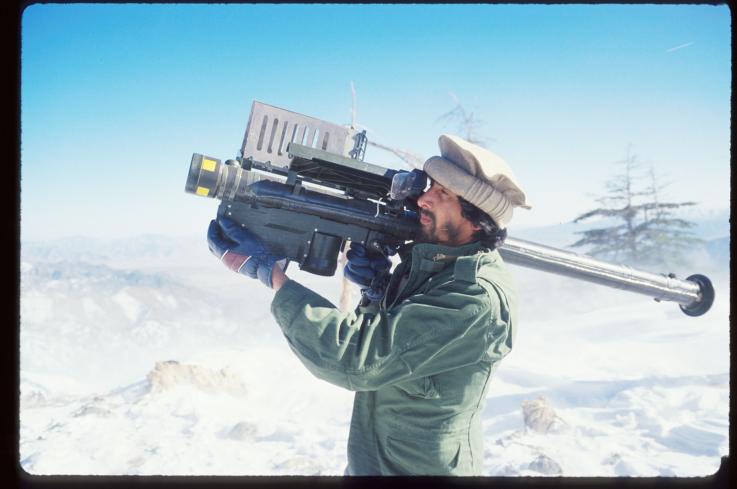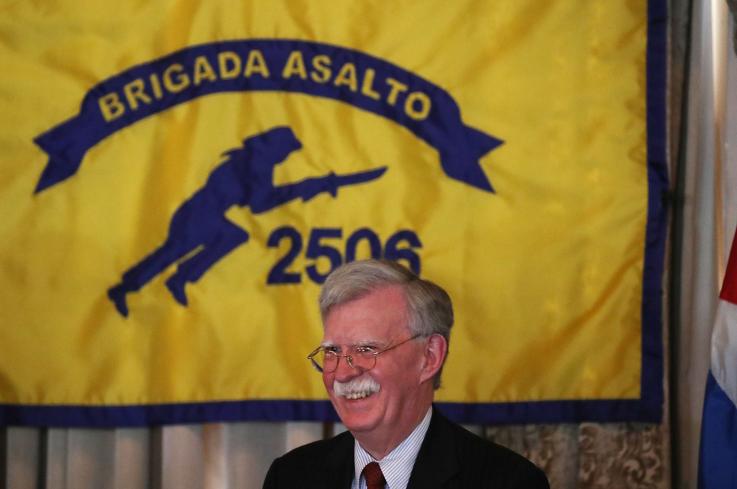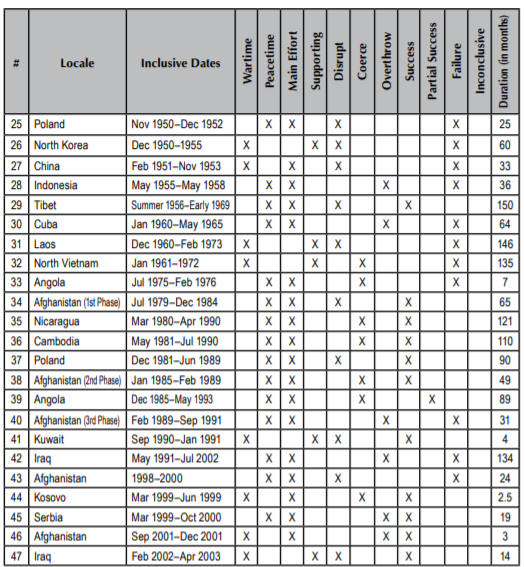U.S. Special Forces School Publishes New Guide for Overthrowing Foreign Governments
EXPOSURES - EXPOSÉS, ANGLO AMERICA, MILITARISM, 20 May 2019
8 May 2019 – The official school of the United States’ Special Operations Command has published a new paper detailing a decades-long history of Pentagon-backed interference around the world, hoping to provide insight on how best to approach such efforts in the present and future.
The 250-page study, “Support to Resistance: Strategic Purpose and Effectiveness,” was compiled by Army Special Forces veteran Will Irwin and published earlier this week by the official Joint Special Operations University, where he was a resident senior fellow. Though the report notes that its views “are entirely those of the author,” its findings present a comprehensive look at how the U.S. has supported efforts to pressure, undermine and overthrow foreign governments.
Watch Video: US National Security Advisor John Bolton’s Message to Ayatollah of Iran
The report includes some 47 case studies spanning from 1941 to 2003, detailing a legacy of mixed results that included assisting partisans against the Axis Power satellites during World War II, bolstering anti-communist forces throughout the Cold War and taking on post-9/11 adversaries in Afghanistan and Iraq. The numerous Washington-orchestrated coups of the past 70 years were “not included in this study as they did not involve legitimate resistance movements.”
“This work will serve as a benchmark reference on resistance movements for the benefit of the special operations community and its civilian leadership,” the report reads.

A guerrilla soldier aims a U.S.-built Stinger surface-to-air missile system at passing aircraft near a remote rebel base in the Safed Koh Mountains, in Afghanistan, on February 10, 1988. Robert Nickelsberg/Liaison
The cases were broken down into three major support to resistance (STR) categories: disruption, coercion and regime change. The report found that “from 1940 to the present, nearly 70 percent of STR operations were conducted for disruptive purposes,” while “non-disruptive cases were about equally divided between coercion and overthrow.”
Of the 47 cases analyzed, 23 were deemed “successful,” 20 were designated “failures,” two were classified as “partially successful” and two more—both during World War II—were called “inconclusive” as the broader conflict led to an Allied victory anyway. Coercion was the most successful method at a three-quarters rate of success or partial success, while disruption worked just over half the time and regime change only yielded the desired result in 29 percent of the cases reviewed.
Other major findings included observations that most operations “were carried out under wartime conditions, with those being nearly twice as successful as cases conducted under peacetime conditions” and “support to nonviolent civil resistance seems to be more likely to succeed than support to armed resistance.” At the same time, they were also “most effective when conducted in direct support of a military campaign rather than as an independent or main effort operation.”
In eight of the 20 failures found, the author blamed security breaches that clued the enemy in ahead of time, sometimes potentially through coverage in U.S. media, as may have been the case with newspaper stories prior to the abortive CIA-backed Bay of Pigs invasion of Cuba.

U.S. national security adviser John Bolton speaks during the Bay of Pigs Veterans Association lunch at the Biltmore Hotel, in Coral Gables, Florida, on April 17. The Trump administration has evoked the U.S.’ extensive history of intervention against leftist forces across Latin America with new efforts targeting Cuba, Nicaragua and Venezuela. Joe Raedle/Getty Images
The paper also acknowledged that this kind of mission “most often addresses immediate issues and short-term rather than longer-term interests,” though it defended unintended consequences of U.S. assistance for Afghan mujahedeen, some of whom went on to form the Taliban and Al-Qaeda, by suggesting the Soviet satellite state they were fighting may have turned out to be an even more formidable enemy.
“One thing common to all 47 cases reviewed in this study is the fact that the targeted state was ruled either by an unfriendly occupying force or by a repressive authoritarian regime,” the author wrote, before asserting that in the present day, “Russia and China have boldly demonstrated expansionist tendencies.”
The U.S. has identified Russia and China as its top rivals in recent years, with President Donald Trump specifically calling the powers out by name in major strategy documents. Under Trump, Washington has also waged economic wars with other stated foes such as Iran, Syria and Venezuela—whose governments the White House has publicly sought to oust, accusing them of human rights abuses as posing a threat to the national security of the U.S. and its allies.
Tags: CIA, Conflict, Geopolitics, Imperialism, International Relations, Invasion, Military, NATO, Occupation, Pentagon, Power, Trump, UK, USA, Violence, War, West, World
DISCLAIMER: The statements, views and opinions expressed in pieces republished here are solely those of the authors and do not necessarily represent those of TMS. In accordance with title 17 U.S.C. section 107, this material is distributed without profit to those who have expressed a prior interest in receiving the included information for research and educational purposes. TMS has no affiliation whatsoever with the originator of this article nor is TMS endorsed or sponsored by the originator. “GO TO ORIGINAL” links are provided as a convenience to our readers and allow for verification of authenticity. However, as originating pages are often updated by their originating host sites, the versions posted may not match the versions our readers view when clicking the “GO TO ORIGINAL” links. This site contains copyrighted material the use of which has not always been specifically authorized by the copyright owner. We are making such material available in our efforts to advance understanding of environmental, political, human rights, economic, democracy, scientific, and social justice issues, etc. We believe this constitutes a ‘fair use’ of any such copyrighted material as provided for in section 107 of the US Copyright Law. In accordance with Title 17 U.S.C. Section 107, the material on this site is distributed without profit to those who have expressed a prior interest in receiving the included information for research and educational purposes. For more information go to: http://www.law.cornell.edu/uscode/17/107.shtml. If you wish to use copyrighted material from this site for purposes of your own that go beyond ‘fair use’, you must obtain permission from the copyright owner.
Read more
Click here to go to the current weekly digest or pick another article:
EXPOSURES - EXPOSÉS:
- WikiLeaks Has Just Put All Its Files Online--It’s All There!
- How the Opiate Conspiracy Widened
- Inside Israel’s Torture, Rape, and Dehumanization Centers [Sickening]
ANGLO AMERICA:
- Washington Green-Lights $30M for Gaza Aid Scheme Tied to Mass Killings of Palestinians
- War with Iran: We Are Opening Pandora's Box
- Trump’s Useful Idiots
MILITARISM:
